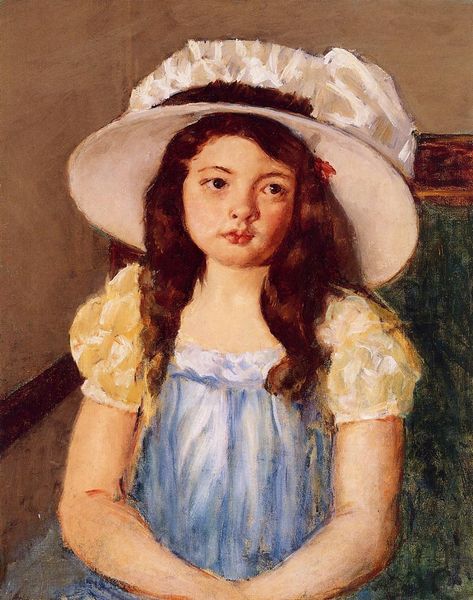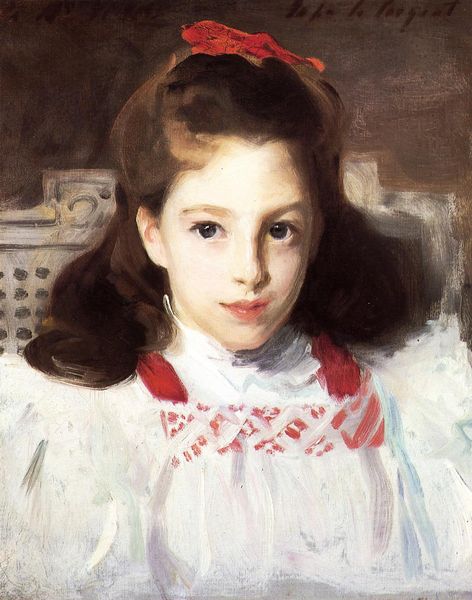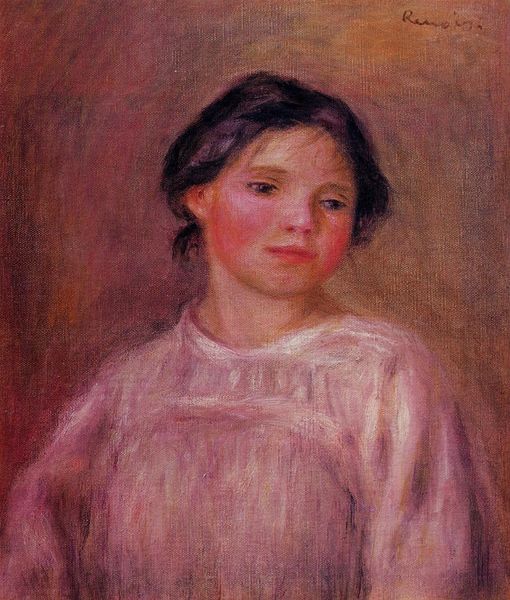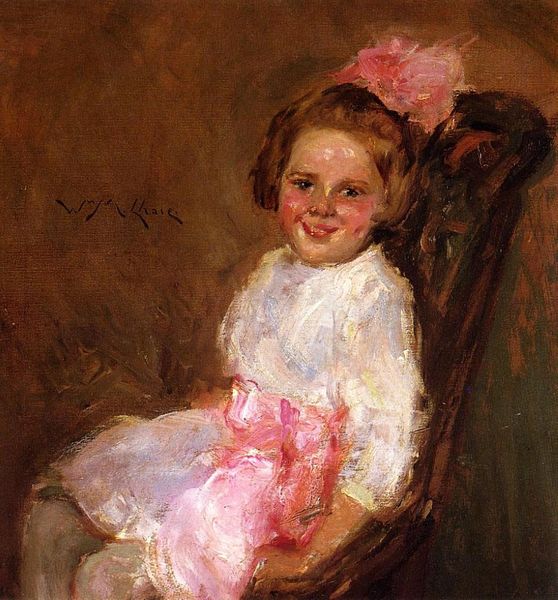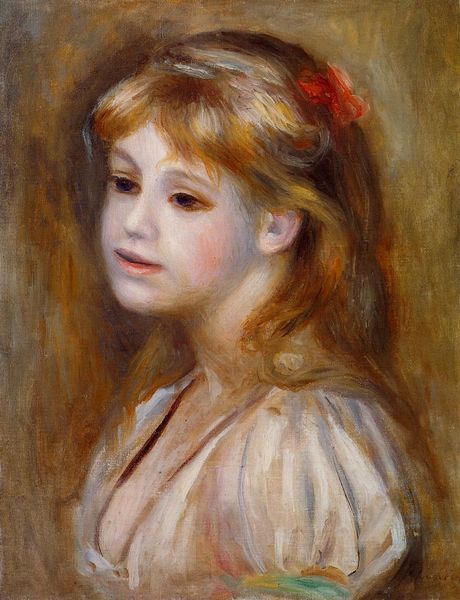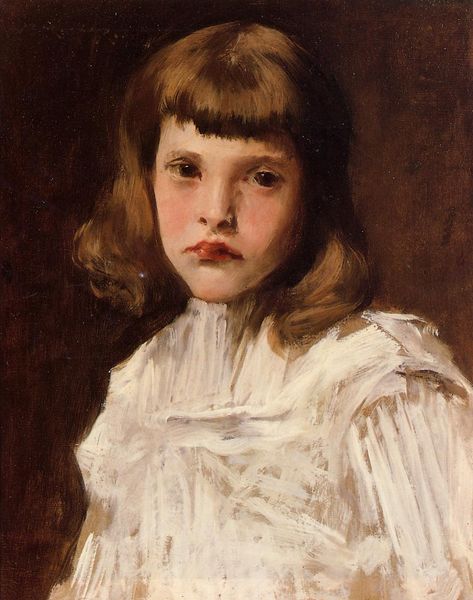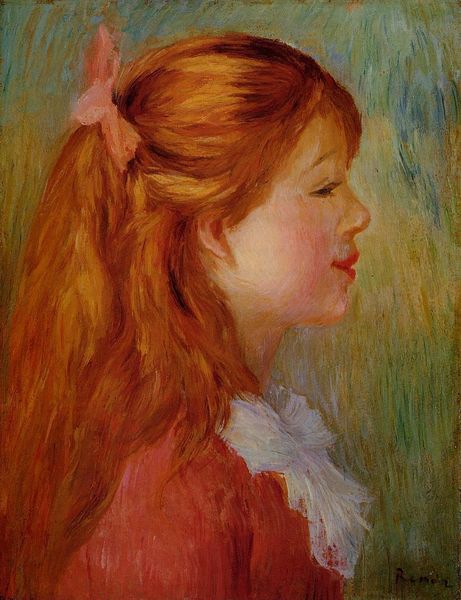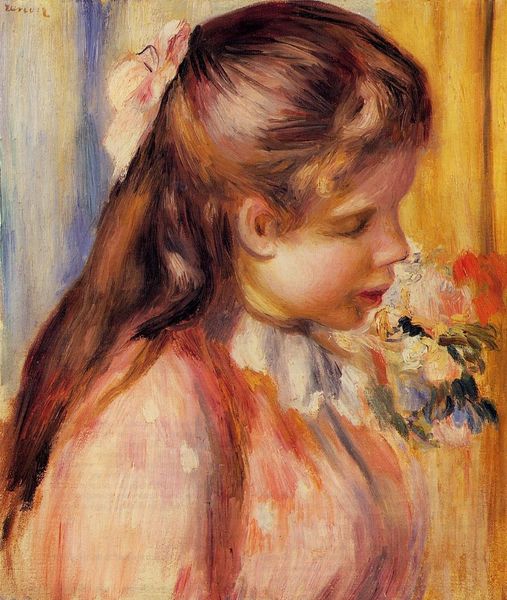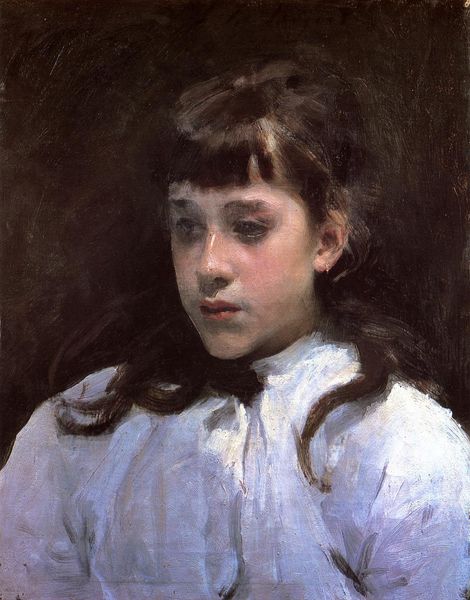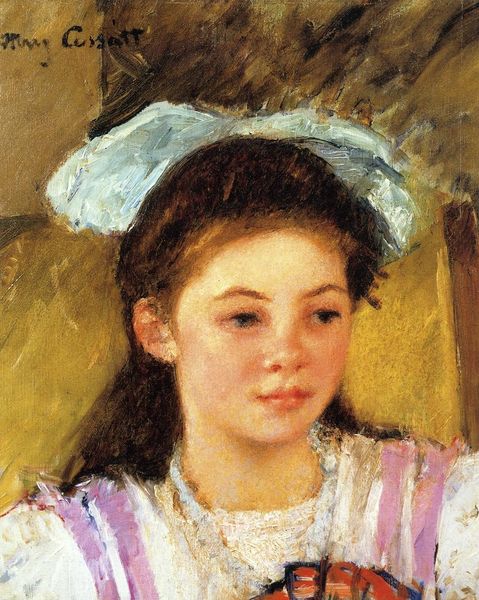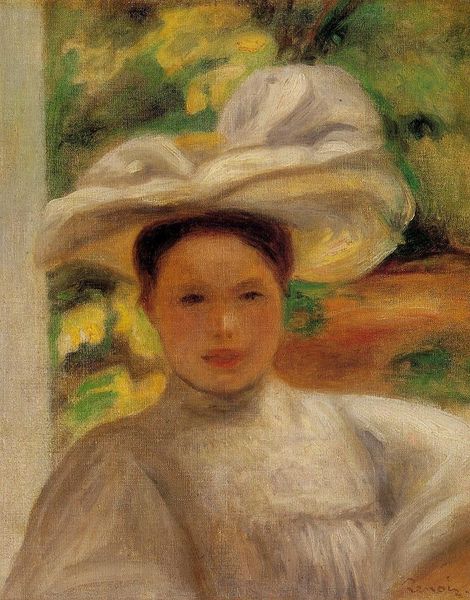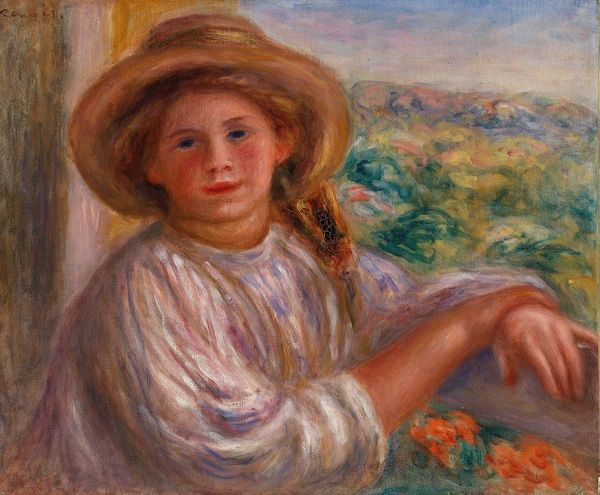
Dimensions: 61.5 x 51 cm
Copyright: Public domain
Editor: This is John Singer Sargent's "Teresa Gosse," painted in 1885. I'm struck by how Sargent captures this young girl; there's an almost unsettling stillness in her eyes. What social narratives can we unpack here? Curator: It's more than unsettling; it’s an incredibly self-possessed gaze for such a young subject. Given the time, how do you think ideas around gender and childhood are being negotiated in this portrait? Editor: I guess there’s this tension between innocence, signified by the white dress and flower crown, and a knowingness in her expression. It challenges conventional Victorian ideals, perhaps? Curator: Precisely. Sargent subtly disrupts the expected sentimental portrayal of childhood innocence. We should ask ourselves: Whose gaze are we adopting? Are we invited to patronize this child, or something else? Consider the composition. The high neckline, the almost severe lighting… it positions Teresa as an individual, rather than just an object of aesthetic appreciation. This shift in representation allows her agency. It makes us wonder about her actual thoughts, which is profound given the very limited voice women and children had at the time. Editor: So, it's about pushing back against those limiting representations and finding power in how she’s portrayed, her own individual identity shining through despite the constraints of the period. Curator: Exactly! It encourages us to question not only what we see, but why and whose perspectives we've inherited, and also gives voice to those marginalized. It reveals how Sargent captured a specific young girl, who refused to be passively gazed upon. Editor: I didn’t initially see it that way. Looking at it through the lens of social commentary gives the work so much more depth. Curator: Indeed. It challenges us to constantly re-evaluate these narratives in art history.
Comments
No comments
Be the first to comment and join the conversation on the ultimate creative platform.

